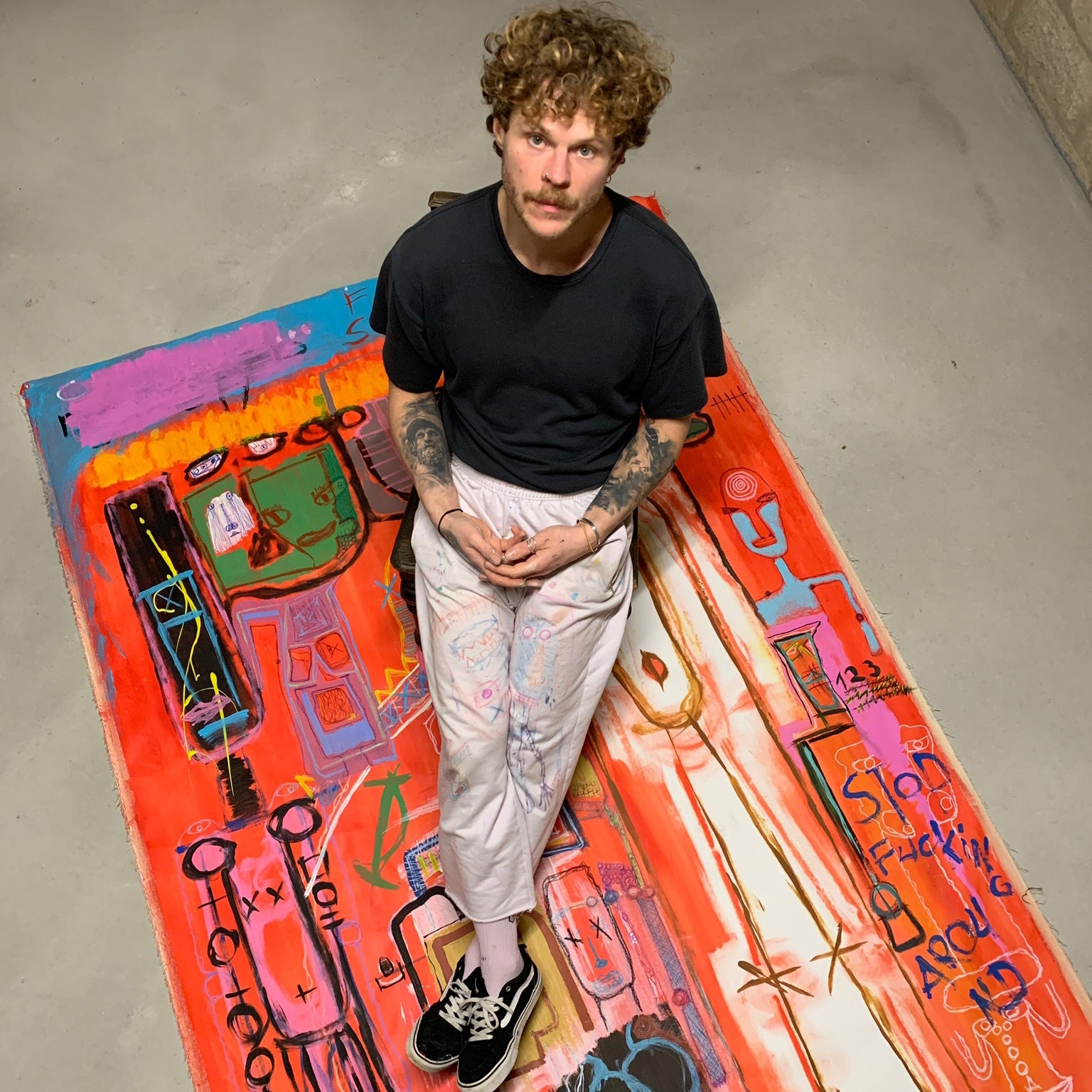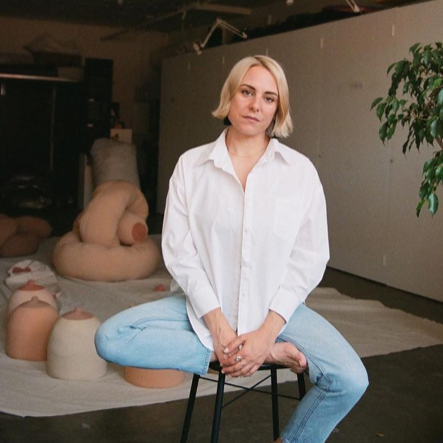Ihar Barkhatkou (born 1988 in Minsk, Belarus) currently lives and works in Tbilisi, Georgia. In his artworks, he wants to break the barriers between architecture, drawing, painting, poetry, music, theatre and cinema.
 How did you get into art?
How did you get into art?
I was born into a family of artists. My mother, father, and grandfather were all famous Realist artists. As a result, I've been living in the arts from the time I was little, and regardless of which field I worked in, I always understood that art was my calling.
How would you describe your style? What makes your work special?
It may be that my works are one form of writing, but this does not at all mean that they are calligraphic. Calligraphy is an art of that which is formed, while what I am interested in is the action itself, created by the handwriting. My brutish, at times clumsy, lines preclude any association with a technique, and even more so with a style. Even in those works where something is being depicted, be it a person or nature, the focus is on the means by which the resemblance is attained. The viewer is liberated from the necessity of identifying that which is drawn, with the lines only serving to compel progression towards the details, without donning any masks of resemblance in the process. This domain is far from mimetic in nature, as there is no image, though I still do hope that one may be perceived, with a landscape or a portrait discerned therein. Shape in itself does not exist, but rather varies with those external forces that constrain it. That said, a rather large portion of the canvas surface remains blank and not drawn on, yet the nature of the space is hinted at with the help of external and internal contours. I aspire to differentiate very precisely between the contours of objects and the background contours. Shading in my art does not necessarily serve to convey the various degrees of illumination of an object, but rather a particular disruption of balance introduced into the statics of the canvas.
 How do you go about developing your work?
How do you go about developing your work?
Currently, I am exploring the potential of abstraction, which would allow certain "elements" of painting, such as colour, to acquire a semblance of autonomy. Avant-garde practices sought to use colour as a means to obtain a new vision, a way of Seeing, and so my attention is currently focused not so much on the colour itself as on the possibilities it brings.
 Who or what influences you?
Who or what influences you?
I always listen to music while I work. I am an artist inspired by music - by J. S. Bach, R. Wagner, D. Shostakovich, G. Mahler, G. Ligeti. I see in music an undying force on which modern art may be built. And perhaps the nervous, at times aggressive, characteristics of my works should be attributed to the energy that develops during the creative process each time the brush, to the accompaniment of music, touches the canvas.
Silent cinema has also had a great influence on my art. The pictures of S. Eisenstein, R. Wiene, C. T. Dreyer, A. Dovzhenko, D. Vertov, and V. Pudovkin taught me to see composition and to depict movement. Moreover, my contours and strokes are largely constructed using film-editing techniques: wide shot, medium shot, close-up, three figures, one figure, multiple figures, cross out.
Regarding the graphic arts, what has influenced me the most were the drawings of V. Favorsky, K. Kollwitz, and H. Holbein the Younger. This is precisely the kind of art that I could study endlessly.
Make us curious. What is planned next?
As a Wagner enthusiast, I am interested in the idea of Gesamtkunstwerk. It is my aspiration to break the barriers between architecture, drawing, painting, poetry, music, theater, and cinema. I aspire to create grand projects founded on the synthesis of all the arts, with their contributions equally intertwined. How that will come to be is something that I hope you will see soon.



 Instagram
Instagram
